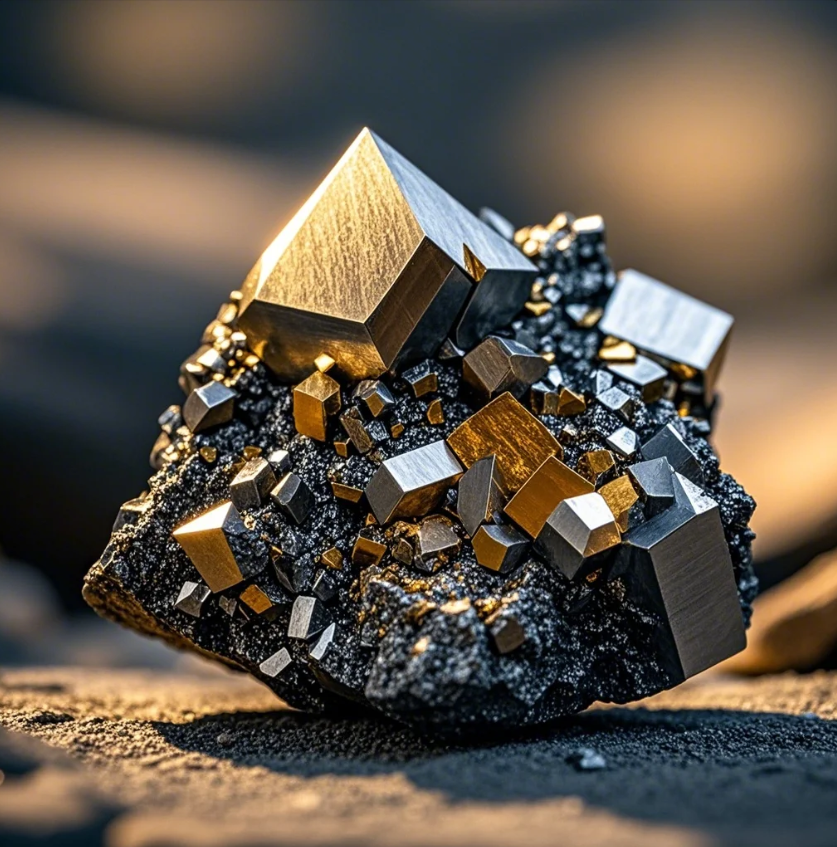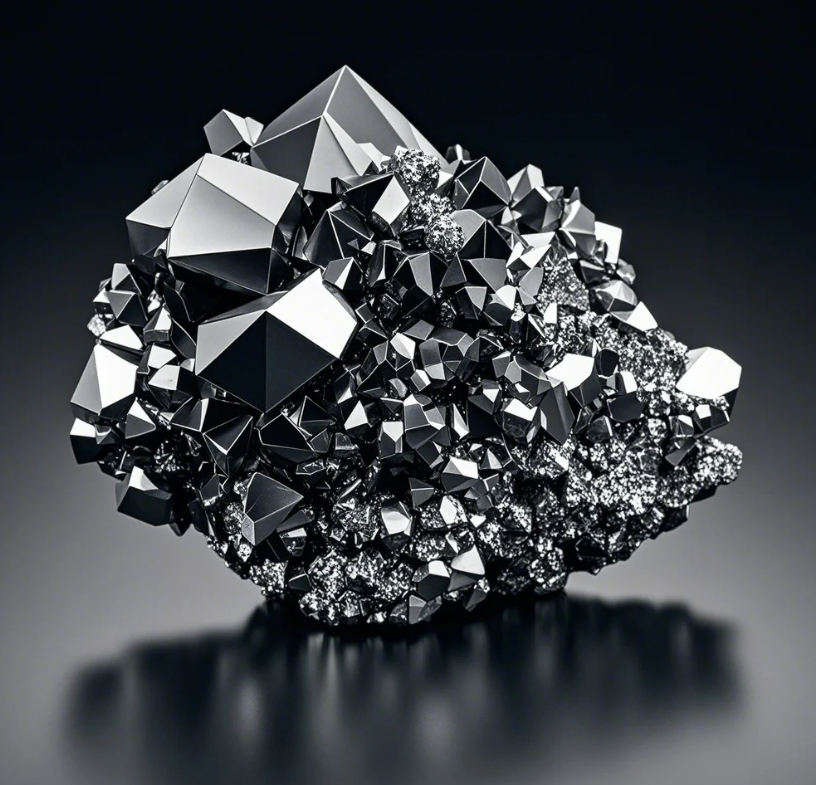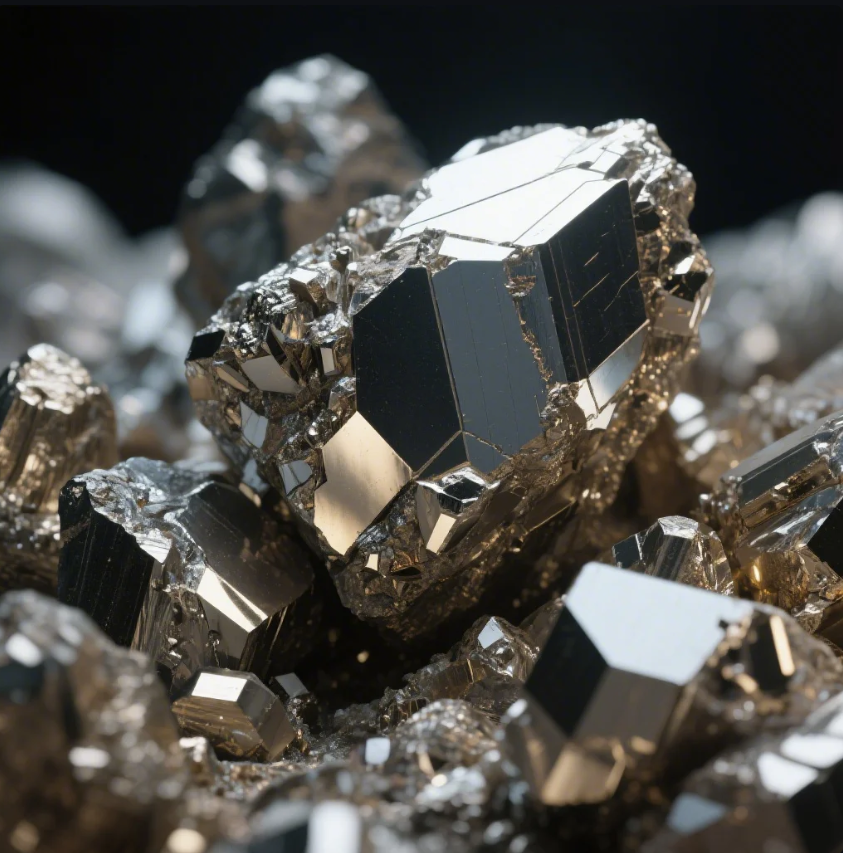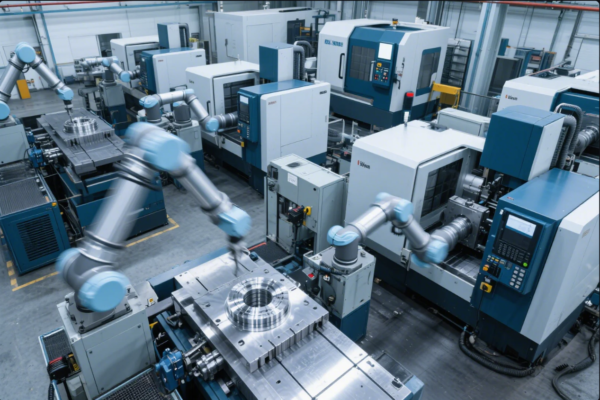What Are the Minerals in Titanium?

Titanium is one of the most valuable industrial metals today. But where does it come from, and which minerals contain it? In this article, I’ll walk you through the natural sources of titanium, its rarity, and its role as a raw material in modern manufacturing.
Snippet paragraph: Titanium is mainly derived from minerals like ilmenite and rutile. These minerals serve as the primary raw materials for titanium production.
Transition paragraph: Let’s explore the specific minerals that contain titanium, and understand how this strong, lightweight metal is sourced and used.
What Are the Raw Materials of Titanium?
Titanium does not occur in its pure metal form naturally—it must be extracted from specific titanium-bearing minerals. These minerals are mined, processed, and refined into titanium metal or compounds.
Snippet paragraph: Titanium is primarily extracted from two minerals—ilmenite and rutile—which are abundant in certain parts of the Earth’s crust.

The Two Main Titanium Minerals
-
Ilmenite (FeTiO₃)
Ilmenite is the most abundant titanium-bearing mineral, making up over 90% of the global titanium feedstock. It's typically black or brownish-black and is found in igneous and metamorphic rocks. -
Rutile (TiO₂)
Rutile is a naturally occurring titanium dioxide and is rarer but richer in titanium content. Its high TiO₂ concentration (up to 95%) makes it highly efficient for producing titanium metal or white pigment.
Other Less Common Titanium Minerals:
- Anatase – A polymorph of rutile, also composed of titanium dioxide.
- Perovskite – Contains titanium and calcium.
- Sphene (Titanite) – A calcium titanium silicate, used occasionally for minor titanium extraction.
Summary of Titanium Mineral Sources
| Mineral | Chemical Formula | TiO₂ Content | Industrial Use |
|---|---|---|---|
| Ilmenite | FeTiO₃ | 35–65% | Main source for titanium metal |
| Rutile | TiO₂ | 90–95% | High-grade feedstock |
| Anatase | TiO₂ | 80–90% | Pigment production |
| Sphene | CaTiSiO₅ | ~40% | Minor source |
| Perovskite | CaTiO₃ | ~58% | Experimental extraction methods |
LOOP_END
Is Titanium the Rarest Metal on Earth?
Titanium is often thought of as rare because of its high value and advanced applications, but geologically speaking, it is not among the rarest metals.
Snippet paragraph: Titanium is the ninth most abundant element in Earth’s crust. It’s not rare, but refining it into usable metal is complex and costly.

Why Titanium Seems Rare
The perception of rarity comes from the cost and complexity of titanium refinement. While titanium-rich minerals are widespread, extracting pure titanium metal involves high-temperature processes (like the Kroll process), which are energy-intensive and expensive.
Comparison with Truly Rare Metals
| Metal | Crustal Abundance (ppm) | Notes |
|---|---|---|
| Titanium | 5650 | Abundant but difficult to refine |
| Platinum | 0.005 | Extremely rare and expensive |
| Rhodium | 0.001 | Rare and costly |
| Osmium | 0.0018 | Among densest and rarest metals |
Titanium is widely available but feels rare because of its high performance, difficult extraction process, and cost.
Is Titanium the Most Powerful Mineral?
Titanium is not a mineral—it's a metallic element, and its power depends on how we define strength. It isn’t the hardest, nor the strongest in every category, but it’s highly valued for a specific combination of properties.
Snippet paragraph: Titanium isn’t the most powerful mineral, but it’s one of the strongest metals in terms of strength-to-weight ratio and corrosion resistance.

What Makes Titanium So Valuable?
- High Strength-to-Weight Ratio – Stronger than steel but 45% lighter.
- Corrosion Resistance – Titanium naturally forms a passive oxide layer, making it ideal for marine and chemical applications.
- Biocompatibility – It does not react with the human body, making it perfect for medical implants.
Not the Most Powerful, But Exceptionally Versatile
While titanium isn’t harder than tungsten or as strong as certain alloys, its balance of properties makes it irreplaceable in fields like:
- Aerospace
- Medical implants
- Chemical processing
- Military equipment
How Much Titanium Is Left in the World?
Titanium is one of the most abundant metals in Earth’s crust. However, the reserves of economic-grade titanium ore are what really matter.
Snippet paragraph: While titanium is abundant, high-quality rutile and ilmenite reserves are limited and unevenly distributed across the globe.

Global Titanium Reserves (Estimated)
According to USGS data:
-
Total identified reserves (ilmenite + rutile):
Over 800 million tons (of titanium-bearing minerals) -
Top producers:
- Australia
- South Africa
- China
- India
- Mozambique
Titanium Reserve Distribution Table
| Country | Estimated Titanium Reserves | Key Mineral Type |
|---|---|---|
| Australia | ~250 million tons | Ilmenite, Rutile |
| South Africa | ~200 million tons | Ilmenite |
| India | ~100 million tons | Ilmenite |
| China | ~100 million tons | Ilmenite |
| Mozambique | ~80 million tons | Ilmenite |
At current rates of production, known reserves could last several decades, but geopolitical and environmental factors can affect titanium mining and availability.
Conclusion
Titanium comes primarily from minerals like ilmenite and rutile—not rare in nature, but difficult to refine. Its unmatched combination of strength, lightness, and corrosion resistance makes it a cornerstone in modern industries. Though not the rarest, its value is driven by performance, not scarcity.
Looking for high-performance titanium components for aerospace, medical, or industrial use? Contact Prime today for expert sourcing, custom solutions, and ISO-certified titanium parts—with rapid delivery and guaranteed quality.







